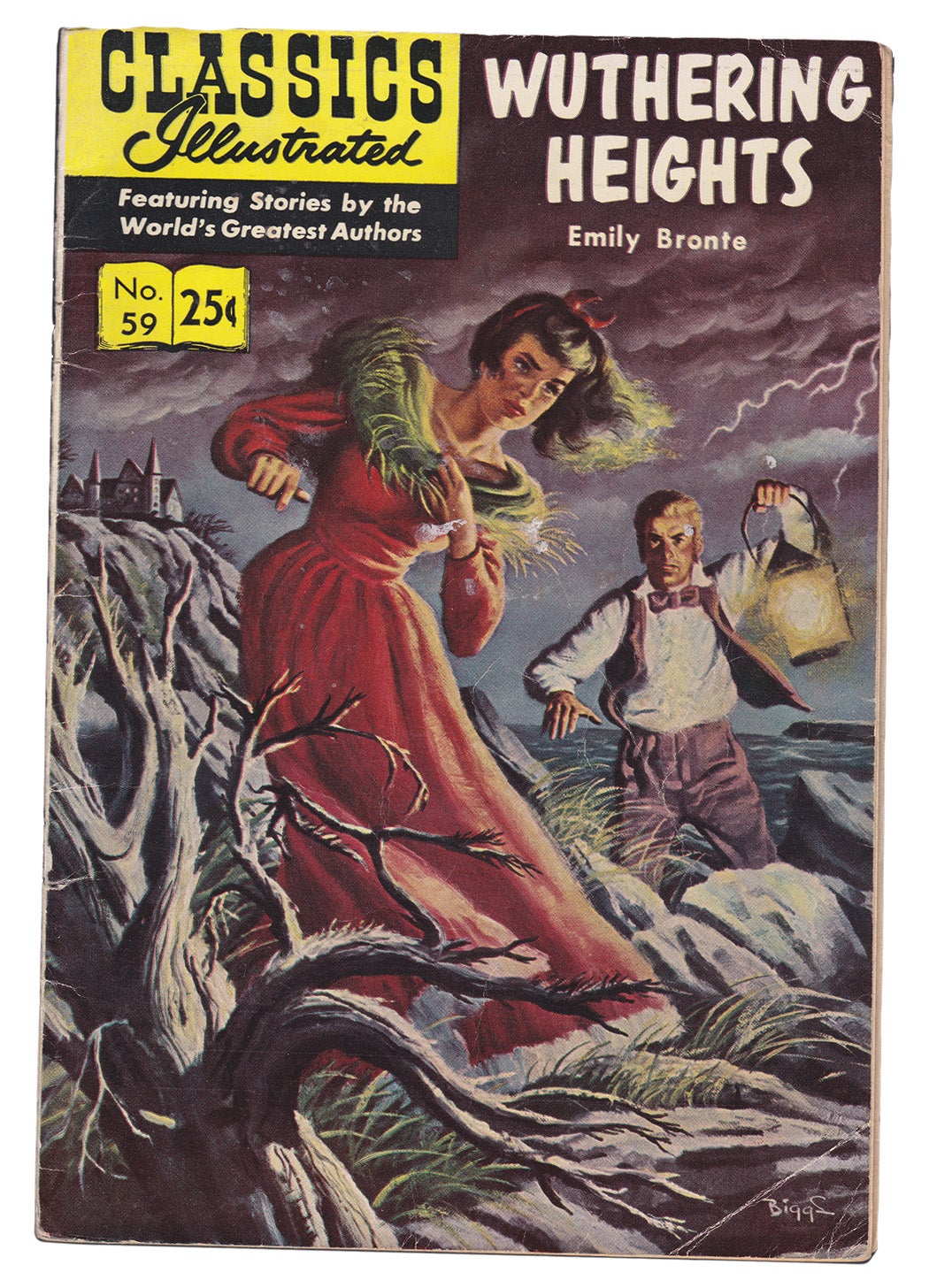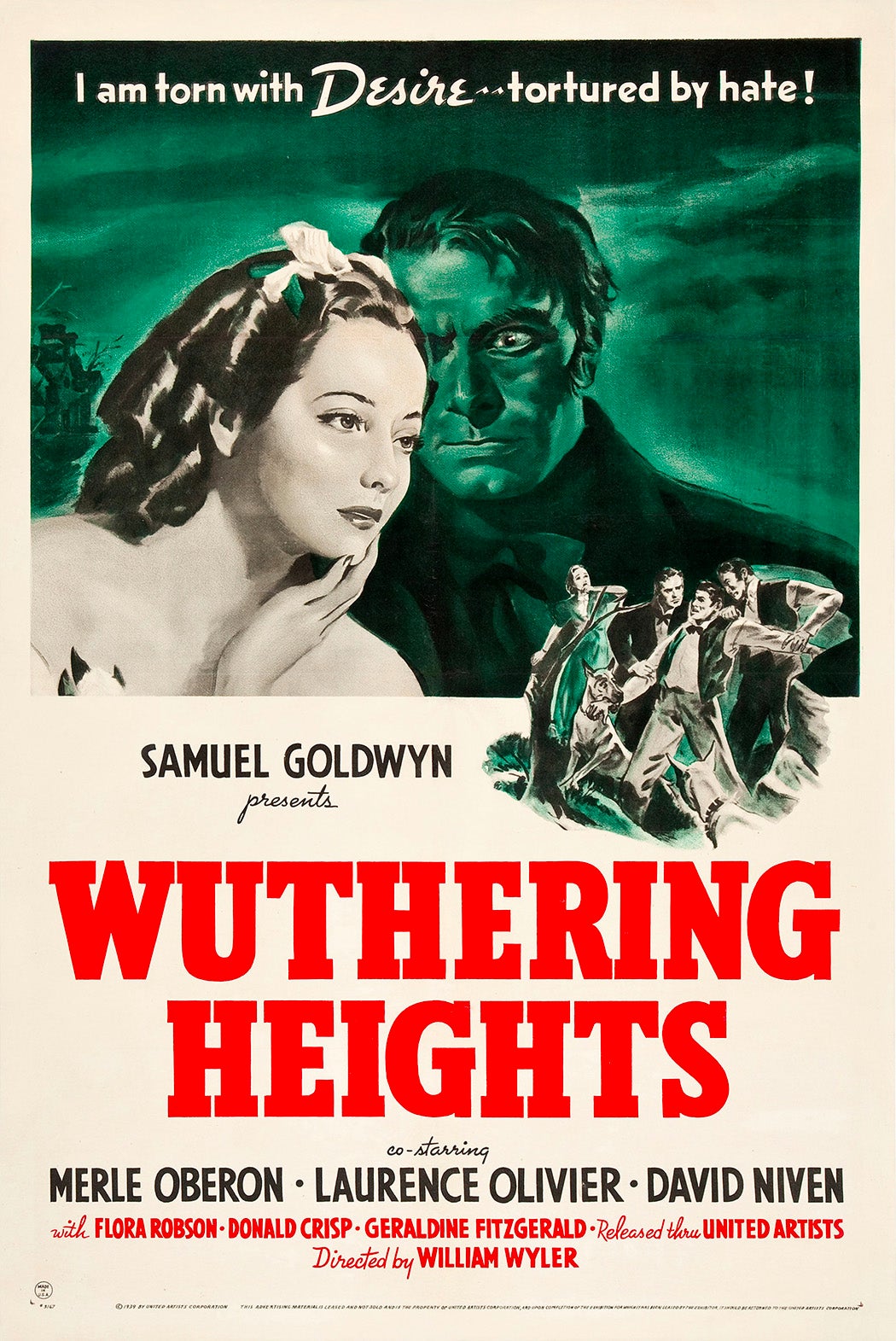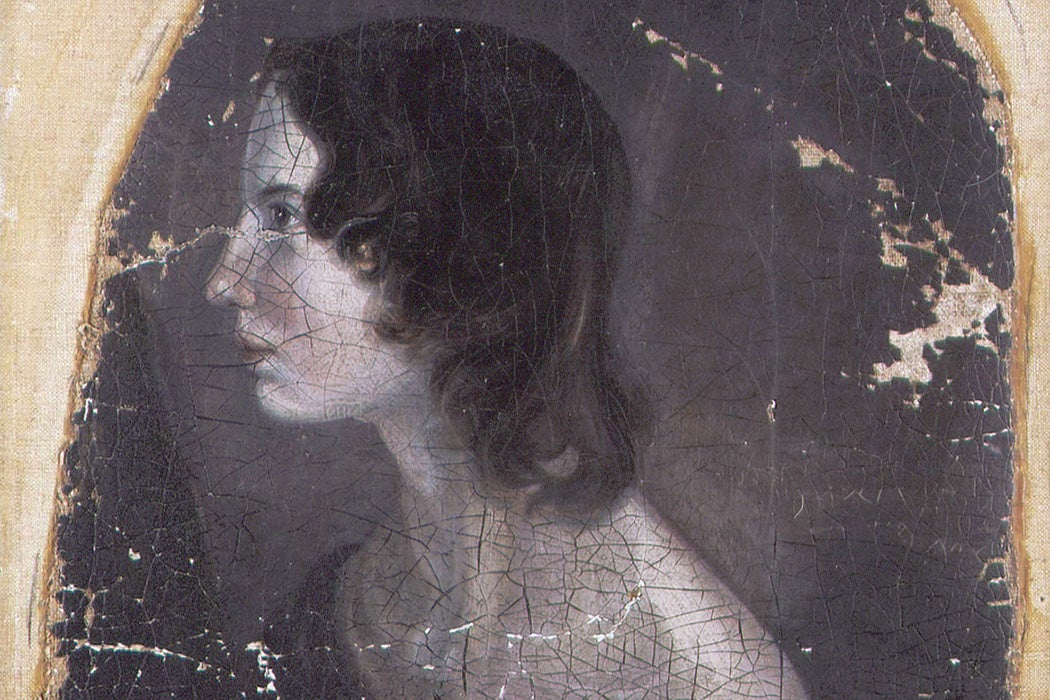One can only imagine what was going through Charlotte Brontë’s mind the day she knelt by the blazing fireplace in Haworth Parsonage, her family home, with her dead sister Emily’s unfinished manuscript clutched in her hands. Did she look at that purposefully tiny, yet passionately scribbled handwriting, and feel the tears rush to her eyes? Did it remind her of the countless afternoons she and her three siblings, all now “gone like dreams,” spent penning stories about their childhood imaginary worlds? Were the papers stamped with flour fingerprints from Emily’s never idle hands, the product of the writer-housekeeper busily moving back and forth from the writing desk to the kitchen, to the writing desk again?
Whatever Charlotte Brontë was thinking, whatever was present on those pages, they went the way of Rochester’s family home: up in flames.
Weekly Newsletter
This forlorn, Victorian scene is not entirely a work of fiction. There is some truth to it. Emily Brontë, the author of the English literary classic Wuthering Heights, did die tragically young, and she did leave a second novel unfinished. A letter from Emily’s publisher Thomas Cautley Newby, dated February 15, 1848, shows as much. The letter is a part of the Brontë Parsonage Museum’s collection of the family’s correspondence. It reads:
I am much obliged by your kind note and shall have great pleasure in making arrangements for your second novel. I would not hurry its completion, for I think you are quite right not to let it go before the world until well satisfied with it, for much depends on your new work if it be an improvement on your first…
Some scholars speculate that this letter was actually meant for Anne Brontë, who also had a second novel, The Tenant of Wildfell Hall, in progress. But how could this be, when the letter was specifically addressed to Ellis Bell, Emily’s pen name? Anne’s was Acton Bell. Even the most disorganized of publishers would be able to differentiate between the two.
Whether Charlotte really did burn the manuscript of Emily’s second novel has never been proven or confirmed, but the myth has some foundation. Charlotte’s notoriously poor management of her sisters’ literary estates after their deaths bordered on malicious. The Brontës’ biographer Juliet Barker certainly seems to lean toward the idea that Charlotte did away with the manuscript. Barker theorizes that Charlotte may have feared the public backlash that Emily’s bold prose invited from the very beginning, and that the content of the second novel may have been even more shocking and risqué than Wuthering Heights:
Had Newby ever received the manuscript, he would undoubtedly have published it, so the obvious inference is again that Charlotte, finding and reading Emily’s second novel, decided that its subject, too, was “an entire mistake” and would not improve “Ellis Bell’s” reputation. In such circumstances, she must have felt justified in destroying the manuscript.
What happened to the manuscript itself likely will remain a mystery, though it is a certainty that Charlotte carried the secret of its contents to the grave. How could she not know what the novel was about, when the three Brontë sisters lived together, wrote together around the same table, and shared their work with each other? Centuries later, Brontë followers can only ponder and guess what Emily’s lost masterpiece might have been about.
The Setting
There is no doubt that Emily’s go-to setting for her second book would have been the Moors. The wild, windy, and wide-open land surrounding Haworth Parsonage was Emily’s favorite haunt in real life—the only place she ever wanted to be. The novelist famously abhorred crowded cities. She was burningly resentful at being dragged off to London and then Brussels by Charlotte, so that they could study languages at a private school in preparation for someday opening one of their own.
Art museums, opera houses, elegant restaurants, and grand cathedrals did not impress her, she who longed for animals, homecooked meals, fresh air, and simple English Protestant country life. Emily was not interested in being a travel writer, to put it lightly. It is highly unlikely that she would have featured cosmopolitan metropolises in her novels, like Charlotte did in Villette and The Professor. If she had, the city would have been a place where her protagonist suffered from chronic homesickness and shyness, like Emily did in Brussels:
Her demeanour in this foreign land was even more painfully reclusive than it had been previously.
In Wuthering Heights, Emily features the Moors as an accepting haven for the free spirits of Catherine and Heathcliff, outcasts against a stern and unforgiving small community that has no place for them (unless they conform to its standards). The Moors are where Catherine flees when the stresses and restrictions of married domesticity, impending motherhood, and separation from Heathcliff prove all too much for her. The Moors are where Emily herself fled when the Brontë household was overwhelmed with financial insecurity and her brother Branwell’s incessant meltdowns. Her sisters often joined her, and they understood too. Charlotte’s Jane Eyre also sought out shelter in the Moors when she had nowhere else to go.

Emily, being the homebody she was, was also fascinated by ancestral homes, dwellings where several generations of one family stayed put and never left unless they had to. To Emily, this idea must have seemed like heaven, and not one, but two such homes serve as key story locations in Wuthering Heights: the haunted house the book is named after and Thrushcross Grange.
The business of property inheritance also captured the author’s attention. In the year 1838, Emily worked as a teacher at a school called Law Hill. A kilometer and a half away from the school loomed Walterclough Hall. This ancient, imposing manor had a dark history of its own: dissipation, a sibling rivalry turned deadly, and vengeance, all which Emily borrowed for the plotline of her first and only complete novel. It’s unlikely Emily ever lost interest in such subjects. On the contrary, the second novel probably had a spooky old house in it, one that Emily would have filled with the ghosts of former inhabitants who, like her, never wanted to leave home.
The Characters
Emily, like all three of her literary siblings, was fascinated by Byronic antiheroes. They did not always have to be likeable, but they needed to be brooding, secretive, dangerous, and most importantly, sexually alluring—impossible for a heroine to resist. The siblings all had unlimited access to their father Patrick Brontë’s collection of books. They all read Lord Byron’s works obsessively, and his influence on their tastes, accomplishments, and even their personalities was so strong it was almost as if he were a second father to them.
Emily produced an iconic Byron archetype in the form of Heathcliff, and likely was in the process of producing another. Helen Brown’s “The Influence of Byron on Emily Brontë” insists that Byron’s grip on Emily’s dark, creative spirit was ironlike, to the point where it affected her moods as well as her poetry and novel writing:
That her imagination was naturally gloomy is the most simple and obvious explanation, but it is not entirely satisfying—one feels even the most tragic of imaginations must have been encouraged by something in the external to produce this orgy of guilt and misery.
If Charlotte did burn the manuscript of Emily’s second novel, she may well have extinguished another Heathcliff before he could begin his life of angst and savageries, tormenting heroines and lovestruck readers alike.

Other likely candidates for this disappeared cast of characters probably would have been: an authoritative but occasionally indulgent father, like Patrick Brontë, a teacher-governess just trying to get by, like the titular ladies Jane Eyre and Agnes Grey, and a loyal servant, like Nelly Dean in Wuthering Heights.
Nelly is a unique commodity in the novel in that she is not only an active character but a narrator and storyteller as well. Here Emily was lovingly portraying the Brontë family’s long-time house servant Tabitha Aykroyd, and it’s probable that another such tribute would have appeared in the second novel. Despite Brontë scholar James Hafley’s negative opinion of Nelly, he acknowledges Emily’s success and skill at making her a complex, three-dimensional character:
Yet it is precisely such a sense totally embodied in the drama of Ellen Dean, that constitutes one of her [Emily’s] chief artistic resources.
Anne Brontë also inserted Tabitha in The Tenant of Wildfell Hall as Rachel, who helps her mistress escape an abusive marriage. Charlotte splits Tabitha into three separate servant characters in Jane Eyre: Mrs. Fairfax, Grace Poole, and Bessie Lee, all indispensable to their employers. This respect that the Brontë sisters gave to servants in their fiction was unusual for the time. All three Brontë women knew how to write fully fleshed-out characters, but the names of those who appeared in Emily’s second novel have been lost forever.
Recurring Themes
At the time Emily was plotting her second novel, the Brontë family was in crisis. Branwell Brontë, once the Golden Child of the household on whom all hopes were placed, had fallen from grace in a spectacular manner that was, in itself, flawlessly Byronic. He had not only been fired from his teaching job, but he had also been brutally rejected by the married woman he was having an affair with. His opium and alcohol addictions had left him housebound, infirm, and unmanageable.
Charlotte and Anne both drew inspiration from this well for Jane Eyre and The Tenant of Wildfell Hall. Both books featured themes of addiction, mental illness, adulterous romances, and underappreciated women having to pick up the slack. There is no doubt Emily’s second novel covered the exact same topics, especially since Emily herself had taken on many of the nursing duties for her ailing brother. I’d guess that the second novel would have offered readers a shockingly intimate account of these experiences—shocking enough, that is, to prompt Charlotte to toss the manuscript into the fire, lest anyone ever lay eyes on it. We might have had a heroine nursing a bedridden Byron, the pages dripping with innuendos. Victorian readers would have been outwardly appalled—and inwardly delighted.
There is a limit for how far readers can invade a family’s privacy, even for the Brontës. The artistic differences between Charlotte and Emily often clashed, and the final product of this complicated sibling relationship was Charlotte’s insistence on preserving Emily’s reputation, and never letting her sister’s more perverse side leak to the outside world. As the Brontë scholar Emily Rena-Dozier points out in her own critical reading of the sisters’ works, Charlotte, being the cautious and conservative early feminist she was, did understand Emily’s style and vision in her fiction, but never fully accepted it:
Emily Brontë created horrors inadvertently. But Charlotte Brontë of all people must have known that the literary sister of the angel in the house is the madwoman in the attic.
For my part, I remain convinced that Charlotte destroyed the second manuscript not to spite Emily, but to protect her, even at the cost of literary history. We Brontë fanatics are left only to speculate on what the book was about, but at least we can feel gratitude for the existence of Wuthering Heights, arguably the leading masterpiece of the nineteenth century, and at least a wonderfully complete novel.







